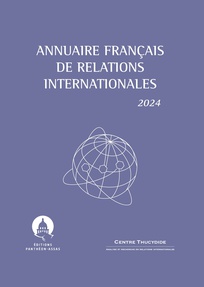Deal or no deal : strictly business for China in Kenya ?
Apurva Sanghi & Dylan Johnson
World Bank, Policy Research Working Paper 7614, 23 mars 2016
Télécharger à http://documents.worldbank.org/... ![]()
Introduction :
In recent years, China’s economic presence in Sub-Saharan Africa has risen rapidly. China’s growth in the region is driven in part by its strong demand for raw materials, and resource rich countries that manage the boom well may also translate the gains to the broader economy, working to pay down high public debt or alleviate poverty. But the countries that benefit from the boom are also more vulnerable to China’s economic slowdown. Oil-importing countries such as Kenya will be shielded from China’s slowdown and should even see an increase in their exports. Kenyan exporters of services such as tourism will fare well as China transitions to consumption based economy by 2030. Greater Chinese consumption may also benefit Kenyan producers in the horticultural sector that are taking advantage of the trend of selling directly to large supermarkets in Asia. Supermarkets in China can also receive Kenyan flowers if Kenya succeeds in negotiating duty-free access for cut flowers as part of the 404 duty free products from African countries. Exporters of flowers are performing well, but producers of manufactured goods face more competition from China in both domestic and foreign markets. Many fear that local producers will be hurt by Chinese imports; cheap plastic shoes and clothes from China, and second-hand clothes in general, are much more popular than local products. In addition, Kenyan exports of clothing to the United States, for example, lost market share to China between 2004 and 2006, and have only recently begun to recover. The manufacturing sector grew slowly at only 3.4 percent in 2014, down from 5.6 percent in 2013, and some worry that slower growth could be a sign of a premature decline of industry. Without a turnaround in manufacturing, the growth potential of the economy is limited. But Kenya can enhance its growth in manufacturing if it continues to attract foreign direct investment from China.
A large share of foreign direct investment (FDI) already comes from China, allowing Kenya to diversify its sources of FDI and increase investment in manufacturing. Lagging behind countries such as Ghana, Nigeria and South Africa, Kenya performs poorly in attracting manufacturing FDI. To increase the low investment, Kenya wants to market opportunities to China because Chinese firms are attracted to the low cost of labor in Kenya. The lower wages, however, come with lower productivity, raising the unit cost of labor; at the moment, the unit cost of local labor is higher than in China, making Kenyan workers more expensive than Chinese ones. If Kenya reduces the unit cost of local labor, it will attract more Chinese investment in labor-intensive industries, providing jobs and helping reduce poverty. There is strong potential for poverty reduction in the textile and garments industry because it mainly employs women, who tend to increase the household savings rate.
China also offers critical financing in sectors that traditional investors overlook: infrastructure and construction. China’s loans compete with loans from traditional donors that attach conditions of good governance and transparency. Uninterested in the politics of the country, China funds major infrastructure projects in Kenya. One such project is the Standard Gauge Railway linking Nairobi and Mombasa by the China Road and Bridge Corporation, and other Chinese construction companies are taking advantage of the real estate boom in Nairobi. Following the slowdown in China, marketing for construction services should increase globally, and even more Chinese companies may come to Kenya to undertake major infrastructure and construction projects. The improvement in infrastructure will help lower the cost of doing business, attract more investment, and enhance productivity.
We contribute to the literature by investigating China’s impact on single, oil-importing country, Kenya. Oil-importers receive little attention in the existing literature, and researchers and journalists usually highlight Chinese demand for land and natural resources in Africa, ignoring the useful role China plays as an infrastructure provider and source of cheap goods for consumers and retailers. In Kenya, Chinese firms invest in more than just natural resources. They also invest large amounts in the communications and automotive original equipment manufacturing sectors. Previous work on China in Africa refers to Sub-Saharan Africa in broad terms and fails to provide specific examples and guidance for individual countries navigating relations with China. We avoid overgeneralizing by examining the trade, aid, and foreign direct investment between China and Kenya. Chinese investment is more than just state-owned companies negotiating directly with the government. Many are private companies looking for access to the domestic market or to produce goods for export to Europe or North America. The manufacturing and service sectors attract a number of small and medium enterprises, and construction draws larger companies. Some bid for tenders from the Ministry of Commerce and receive support based on performance; others raise capital from family and friends in China; state-owned firms can access subsidized credit from the China export-import (EXIM) bank. But the size, operations, and financing of Chinese firms is quite diverse, a diversity that is often overlooked when discussing Chinese investment in Kenya.
We also find that businesses employ a majority of local workers in full-time and part-time roles; the majority of surveyed firms also report having a policy to localize its workforce, challenging the stereotype that Chinese firms only use Chinese labor. Workers also receive basic skills, safety and hygiene training. Chinese firms can offer even more training if Kenya promotes local capacity building and technology transfer —The WTO’s trade related investment measures (TRIM) forbids local content requirements. Mega-infrastructure projects undertaken by Chinese companies are valuable learning opportunities for local industry and training institutes; they allow well-organized firms to upgrade equipment and supply materials for both current and future projects. Experience from the Standard Gauge Railway (SGR) linking Mombasa to Nairobi has shown that without a strategy for knowledge sharing, local firms will miss out on the spillover effects from investment, a crucial part of increasing competitiveness of the domestic economy.











